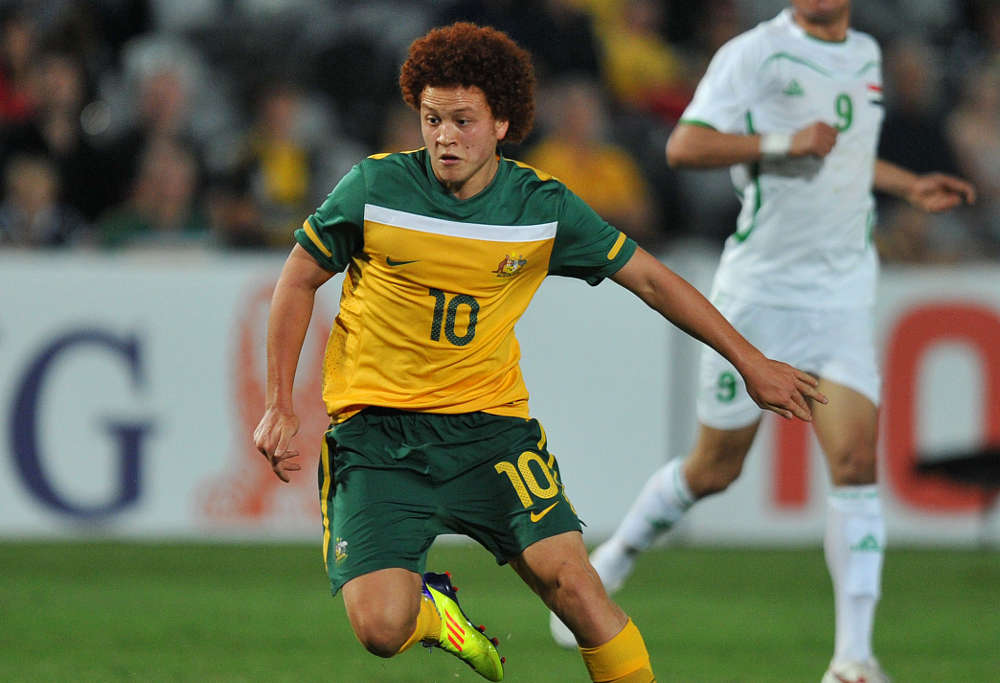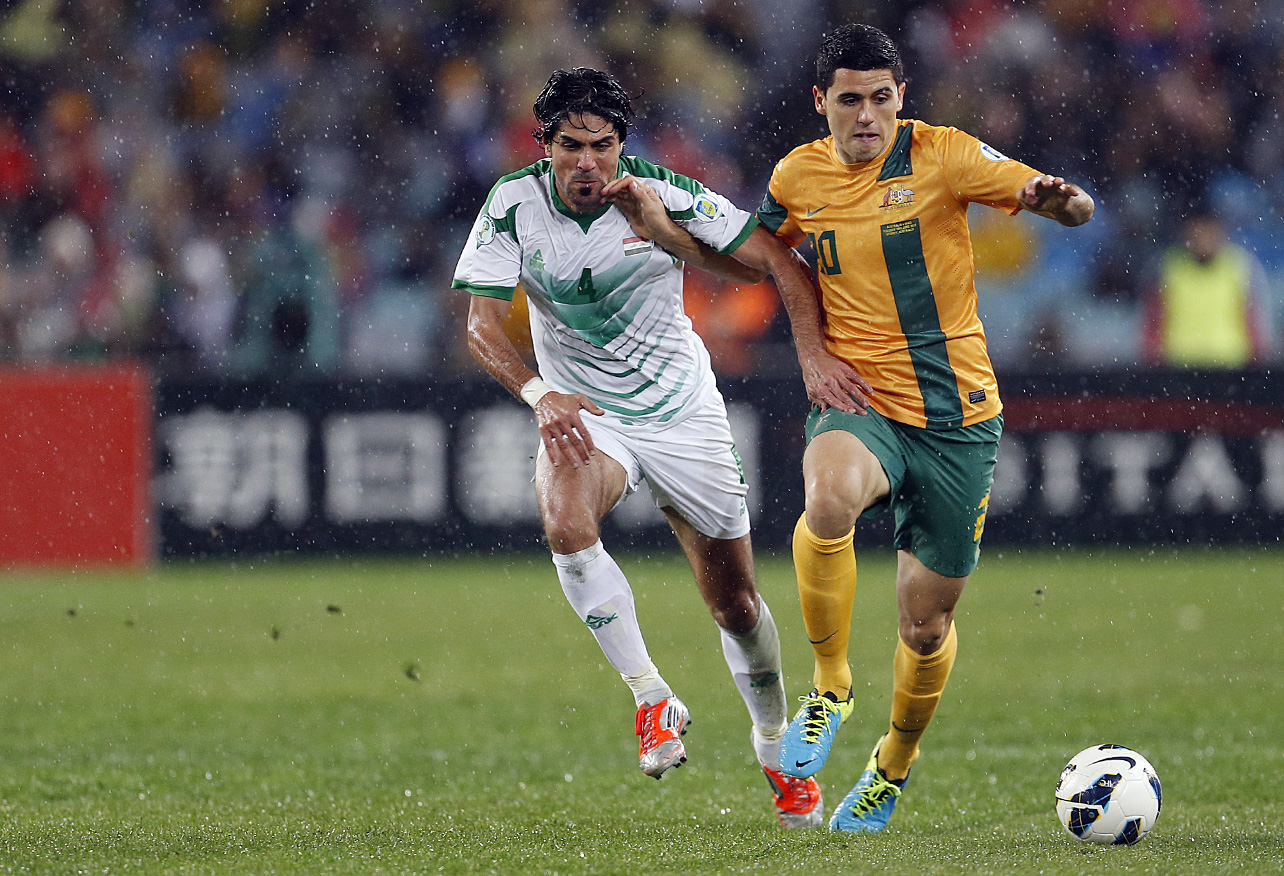Young excellence, promotion battles, and a happy farewell: The Australian team of the week from players around the globe
Even though St.Pauli ultimately lost a high-scoring affair, Jackson Irvine was a standout, as well as scoring a late goal.

Two goals against the UAE was pleasing. Both came from set pieces however, and the Socceroos’ recent reliance on stationary ball goals has been noted.
On one level, a goal is a goal, to state the bleeding obvious. On another level, providing other avenues to goal is vital, as we move into a Tim Cahill-free era. Somewhat ironically, many of Cahill’s finest and most valuable goals came with his head as well.
Some fundamental questions exist around the players who will form the basis of Australia’s attack in the next decade or so.
Firstly, are concerns about other avenues to goal an over-reaction?
Perhaps the attacking players to lead the Socceroos over the short to medium term are good enough and already in the squad. Is it just time and matches that will see them develop the skills and experience in order begin to produce goals consistently for Australia?
With Tommy Rogic distributing at ten, Matthew Leckie and Brad Smith overlapping out wide and Aaron Mooy’s skill with the stationary ball, an argument might be made that Australia has a solid basis.
Throw in Jackson Irvine and Mustafa Amini and people might think that a natural evolution has taken place and Cahill’s departure might actually be a blessing.

Part of me wishes/hopes/thinks, it depends on the day of the week, that these players do have the starch and the skill to address and reverse the apparent lack of open play goals created by the national team.
Perhaps some people expect a little too much, a little too soon. There is much youth there and to demand more at this stage could be unfair. Perhaps they will eventually, as Ange Postecoglou continues to develop this team, become what we so desperately want them to be.
My alter ego suggests that the attacking players we have in the current squad are not capable of solving the problem.
Part of me feels that Tomi Juric just doesn’t pop up in instinctive areas the way that a natural nine does, that James Troisi often looks a little sloppy on the ball and that, as well as Massimo Luongo has played for Australia in the past, there is a long way to go before he provides regularly for the ‘Roos.
The issue around the development of quality strikers and attackers and the apparent lack of Australians in those roles in the A –League is real, and if the assessment of the current squad’s attacking quality and the answer to my first question, prove to be negative, then it raises a second and even more important question:
From where will the goal scoring talent come?
If we must face a cold hard fact over the next few years and realise that our new qualification path through Asia is, in fact, becoming an increasingly difficult task, then we must have a plan in place.
A strategy to produce the type of players we need up front to move Australia forward as our Asian counterparts spend more money and resources on their squads and structures is fundamental to our endeavours.
Of course, financial investment will play a role. Yet there must be more to it.
The national curriculum was designed to develop the player from a young age, playing positive football, using both feet and ultimately to produce footballers of international standard.

The archetypal stodgy and tough defender who played with heart and determination and fought tooth and nail against an opponent with far greater skill and football smarts was something on which Australia cut its teeth through the seventies and eighties. Something that is now long gone.
Then a pre-national curriculum ‘golden age’ emerged on the back of an eclectic group of boys from mostly humble, migrant or grounded origins who took football to a whole new level in this country.
The role that chance played in seeing Mark Viduka, Mark Schwarzer, Tim Cahill, Mark Bresciano and Harry Kewell all together in the same team can’t be underestimated. Yet their journeys to far-flung parts of the world were fast-tracked by a youth spent in Australian systems. Systems that were obviously doing something right to produce so many international standard players.
Criticism of the A-League argues that top-flight football in this country is no longer developing young players due to the absence of a clear link between the levels.
People remember the nurturing of young players, as veterans helped bring them through the grades in the old NSL days, as providing valuable lessons, skills and smarts, attributes many feel are less common in the modern player.
The true results of the curriculum might not be apparent for some years to come and perhaps a new generation will come through. If two or three superstars emerge in the next five years, there could be a variety of ways to interpret the success.

One potential reading is that football is cyclical and all teams will experience eras were questions over the quality of the players linger. Alternatively, as the first group of senior places emerge from the curriculum, it could be lauded as a success if they fill Socceroos jerseys with aplomb.
What would potentially be disastrous is a void of players ready to step into these roles and continued scepticism around the curriculum.
What is happening at youth level in this country is filled with positives. Football programs are becoming more professional with the numbers of qualified coaches increasing, as the days of a keen mum or dad with a whistle become dinosaur-like.
I see it each week with the two football programs with which I am involved. Skill-based drills designed to sharpen players are commonplace and the development of both the boys and girls is obvious.
What is concerning at 5.50pm on a Wednesday afternoon at a muddy local park is whether the drills being implemented are enough. Are we sinking, treading water or moving forward?
Does the next generation, golden or not, evolve naturally?
Or is there a dire need for a rethink about the way we approach development in Australia to ensure that the 2030 Socceroos have kept pace with teams in Asia, who appear to be making great strides forward?
I’d hate to think that it is simply a financial question and that without significant increases, falling behind the likes of South Korea, China, Qatar and even India is a fait accompli.
When A-League clubs have poor days in the Asian Champions League, the criticism of our development compared with other nations grows.
That criticism is quelled somewhat after a match day where some better performances occur.
Subsequently, the reality or mythical nature of potential problems in our goal scoring future remains up for debate. We are a good team, there is no doubt about that, but progressing forward and matching growth in Asia is vital.
Whatever the answer, I sure hope we can farewell Cahill with much fanfare and the appropriate level of enthusiasm, in full confidence that the next one, or two, are just around the corner.